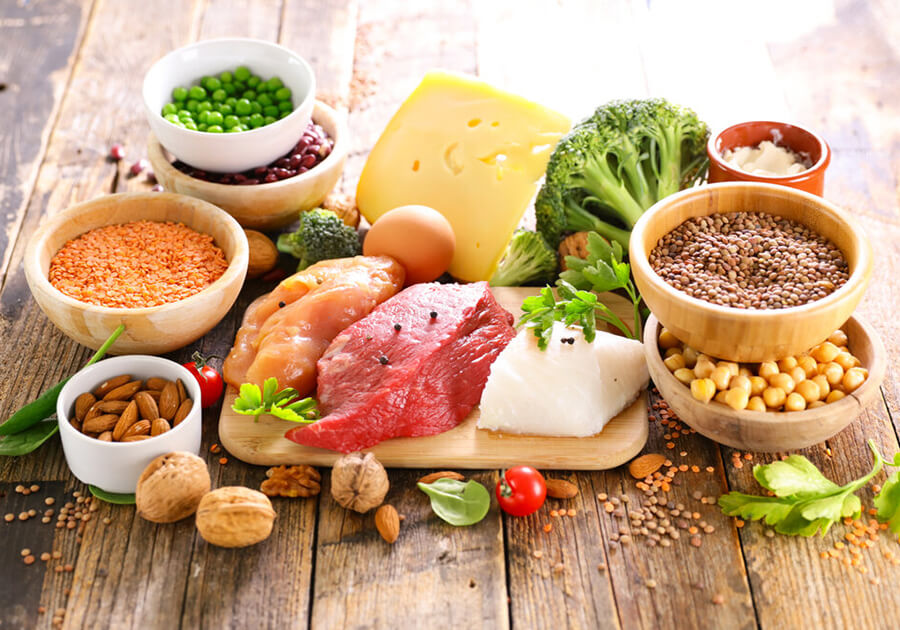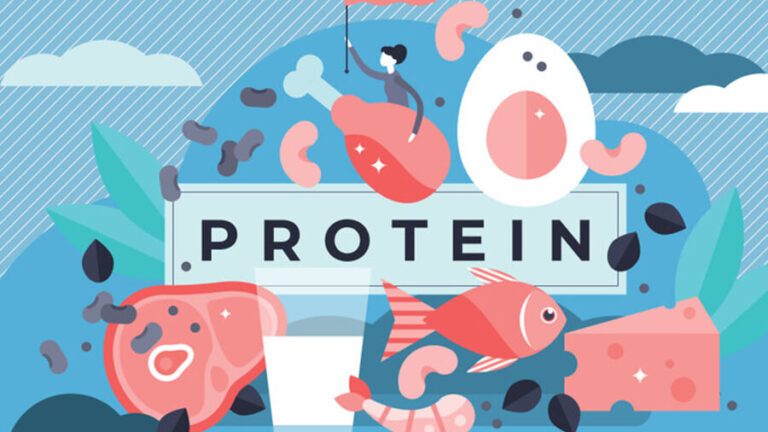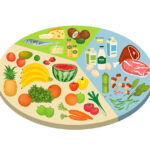Protein is the most vital nutrient for weight loss and a more healthy physique.
A high protein diet increases metabolism decreases hunger and alters many weight-control hormones.
Consuming protein-rich meals, which stimulate glucagon and growth hormone production and are also high in nitrogen, enhance metabolism, decrease hunger, and make us feel full, achieved by the five methods of how proteins burn fats. They are mentioned below –
Mechanism 1: Increase in protein synthesis
Protein provides the building blocks for body tissues, and regular intake of small meals a day, keeps the body in a positive nitrogen balance, which boosts metabolism and hence promotes an increase in energy expenditure and fat burning.
Mechanism 2: Boosts metabolism
Protein not only promotes increased energy expenditure by maintaining a higher metabolic rate, but it also stimulates metabolism since it takes more energy to digest than the other macronutrients, carbohydrates, and fat. As a result, the thermic effect of food (TEF), which refers to the amount of energy expended during the digestion process, increases, which leads to increasing the total number of calories burned during the day.
Mechanism 3: It suppresses hunger.
Protein, in comparison to the other macronutrients, has a strong appetite suppressant impact. The fact that protein increases the release of cholecystokinin (CCK) from stomach cells gives it appetite-suppressing properties. The hormone then goes through the bloodstream to the brain’s hypothalamus, where it informs the brain that the stomach is full.
Mechanism 2: Stimulates the release of growth hormone (GH)
The anterior pituitary releases growth hormone (GH) in response to protein. GH may help people lose weight in a non-direct way. It promotes the release of fatty acids and glycerol into the bloodstream by acting directly on fat cells. Glutamate, a specific amino acid, has been demonstrated to significantly increase growth hormone release in the body, which may lead to increased fat burning.
Mechanism 1: Stimulates the secretion of glucagon.
Protein promotes the release of glucagon, an insulin antagonist hormone, from the pancreas. The body can access and use fat as a fuel source more effectively if insulin production is kept low. Glucagon increases the breakdown of glycogen to glucose in the liver, as well as gluconeogenesis, via boosting amino acid absorption.

List of foods that are high in proteins –
| S.no | Name of Foods | Quantity | Calories | Protein |
| 1. | Lean Chicken Breast | 6 oz | 267 kcal | 54.5g |
| 2. | Lean Pork Chop | 6 oz | 332 kcal | 52.7g |
| 3. | Tuna Fillet | 6 oz | 313 kcal | 50.8g |
| 4. | Beef Steak | 6 oz | 456 kcal | 48.7g |
| 5. | Tofu | per cup | 363 kcal | 43.5g |
| 6. | Lentils | per cup | 230 kcal | 17.9g |
| 7. | Low-fat Yogurt | per cup | 137 kcal | 14 g |
| 8. | Grated Parmesan Cheese | per oz | 111 kcal | 10.2g |
| 9. | Squash and Pumpkin Seeds | per 1oz handful | 163 kcal | 8.5g |
| 10. | Eggs | 1 Large Eggs | 78 kcal | 6.3g |
It is essential to consume adequate amount of protein on a daily basis in order to maintain good health.
Protein requirements differ from person to person. However, most active persons should take 0.54–0.9 grams of protein per pound of body weight (1.2–2 grams per kg) every day, according to experts.
There are plenty of high-protein foods to choose from, both animal and plant-based sources.
To assist meet your daily needs, try incorporating a few of the high-protein items on this list into your diet.





Im pretty pleased to uncover this site. I want to to thank you for your time due to this fantastic read!! I definitely loved every part of it and i also have you book-marked to look at new stuff on your site.
[…] You don’t have to worry about protein. […]